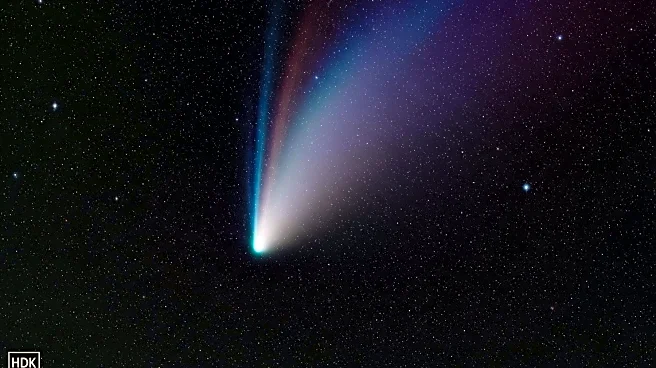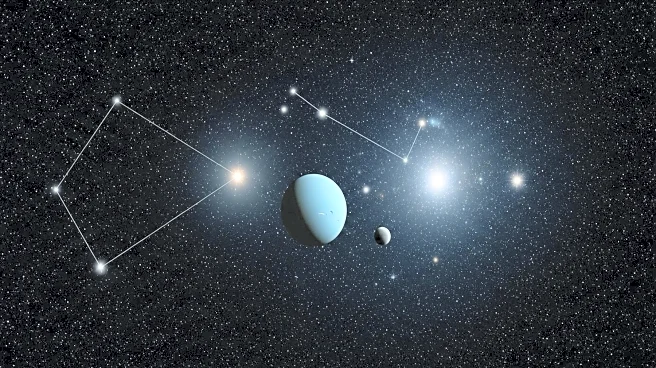What's Happening?
A team led by Sihao Cheng from the Institute for Advanced Study's School of Natural Sciences has discovered a trans-Neptunian object (TNO) named 2017 OF201 at the edge of the solar system. This object is potentially large enough to be classified as a dwarf planet, similar to Pluto. The discovery was made using advanced computational methods to identify the object's trajectory pattern. The International Astronomical Union's Minor Planet Center has officially announced the finding. The TNO's extreme orbit and size suggest a complex history of gravitational interactions, possibly involving close encounters with giant planets. The object's orbit deviates from the clustering pattern seen in other extreme TNOs, which has been linked to the hypothetical Planet X or Planet Nine.
Why It's Important?
The discovery of 2017 OF201 has significant implications for our understanding of the solar system's outer regions. It challenges the notion that the area beyond the Kuiper Belt is empty, suggesting the presence of potentially hundreds of similar objects. This finding could reshape theories about the solar system's formation and evolution, particularly regarding the existence of Planet X. The research highlights the power of open science, as the data used for the discovery were publicly available, allowing for broader participation in astronomical research. This democratization of scientific resources could lead to more groundbreaking discoveries by researchers and citizen scientists alike.
What's Next?
Further observations are needed to determine the exact size of 2017 OF201, potentially using radio telescopes. The discovery may prompt additional searches for similar objects, which could provide more evidence about the solar system's structure and the existence of Planet X. The scientific community may engage in debates and discussions regarding the implications of this discovery, potentially leading to new theories and models about the solar system's dynamics.
Beyond the Headlines
The discovery of 2017 OF201 underscores the importance of computational methods in modern astronomy, allowing researchers to identify distant objects that are otherwise undetectable. It also highlights the potential for citizen scientists to contribute to significant scientific discoveries, given access to the right tools and data. This democratization of science could lead to increased public interest and engagement in astronomical research.












